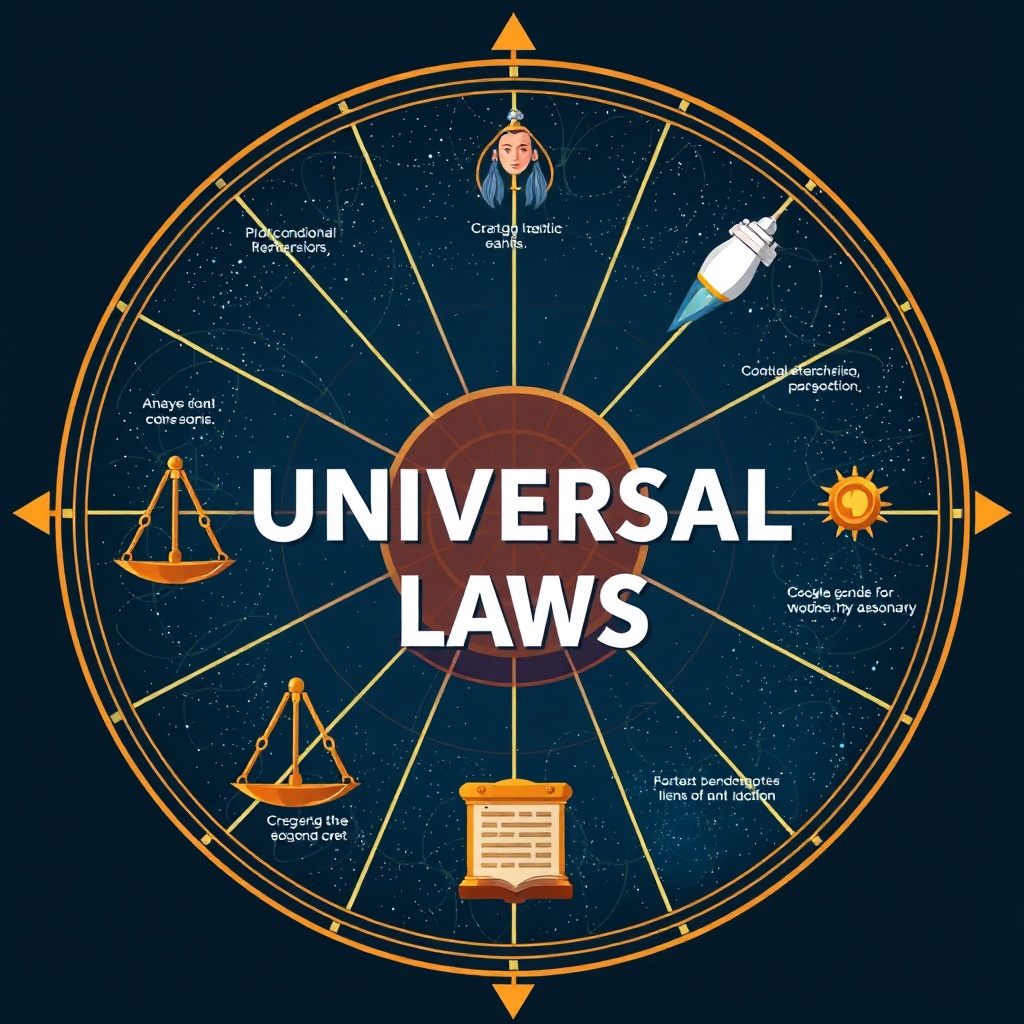Universal Laws describe underlying principles that many philosophical, spiritual and practical traditions treat as consistent patterns governing experience. Whether framed as metaphysical truths or mindful life strategies, these laws offer a way to make sense of cause, change and personal influence. Understanding and applying a few core Universal Laws can improve decision-making, relationships and goal achievement.
Core Universal Laws to understand
– Law of Cause and Effect: Every action produces a result.
Choices, habits and words generate consequences—immediate or delayed. Seeing life through cause and effect encourages accountability and deliberate action.
– Law of Vibration: Everything has an energetic frequency. Thoughts, emotions and environments carry measurable tone; higher-frequency states like gratitude and curiosity tend to attract more positive engagement, while chronic negativity colors perception and outcomes.
– Law of Attraction: Similar to vibration, this law suggests that like attracts like—focused attention and consistent expectation often guide decisions and behaviors that bring corresponding results.
– Law of Correspondence: Patterns repeat across levels of experience. Inner states mirror outer situations; improving internal habits frequently shifts external circumstances.
– Law of Polarity and Rhythm: Opposites coexist and cycles occur. Understanding ebb and flow helps manage setbacks and capitalize on momentum.
Common misconceptions
Universal Laws are not magic shortcuts.
Expecting outcomes without aligned effort or ethical consideration leads to disappointment. These principles amplify what you already do rather than replace action.
Misapplying the laws as blame tools—suggesting someone “deserved” hardship—ignores complexity and empathy.
Practical ways to apply the laws
– Clarify intention: Write a concise intention statement that focuses on values and desired behaviors rather than vague outcomes. Specific intentions guide cause-and-effect momentum.
– Shift vibration with small daily practices: Start a brief gratitude practice, breathwork or a five-minute movement ritual to change emotional tone and focus.
– Use visualization plus action: Combine clear mental rehearsal with a step-by-step plan. Visualization preps the brain; consistent execution produces results.
– Audit your environment: Remove clutter, curate media inputs and surround yourself with people who model the attitudes you want to cultivate. External cues shape internal states.
– Track cause and effect: Keep a simple log of actions and outcomes for a key goal. Noticing patterns accelerates learning and helps refine strategies.
Ethics and responsibility
Applying Universal Laws responsibly means acknowledging privilege, systemic factors and the role of chance. Use principles to empower, not to judge. Support others with compassion and practical resources rather than attributing setbacks solely to individual mindset.
A simple 30-day experiment
Test the combined impact of intention, vibration and action with a short experiment: set one clear goal, practice a daily two-minute gratitude or breath routine, visualize progress for two minutes, and perform one deliberate action toward the goal each day.
Record results weekly. This approach reveals how small shifts compound into measurable change.

Why these laws matter
Viewed as pragmatic frameworks rather than mystical promises, Universal Laws help structure behavior, sharpen awareness and improve resilience.
They encourage people to take ownership of what they can influence while cultivating the patience to navigate cycles. Integrating these laws into daily life supports sustained growth, better relationships and more effective goal pursuit.